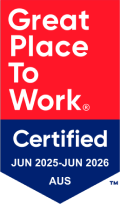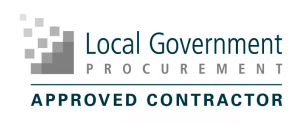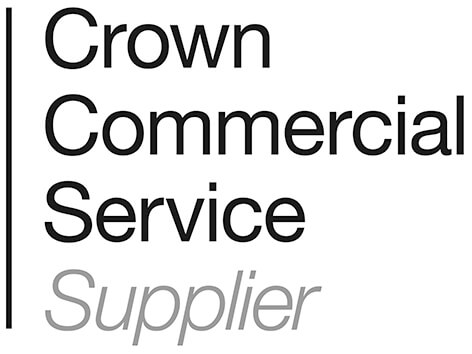From Spreadsheets to Strategic Forecasting: How One Local Government Moved Beyond Static Spreadsheets for Dynamic Developer Contributions Financial Planning
Local governments in high-growth areas face unique challenges when it comes to long-term financial planning, budgeting and forecasting. With land and infrastructure developments constantly arising and evolving regulations, relying on static spreadsheets makes it difficult to get an accurate picture of the future financial landscape.
This was the situation faced by a local government organisation in South West Sydney, which was struggling to accurately plan for the infrastructure and service needs of its rapidly expanding population. A key element of this was modelling infrastructure contributions, also known as developer contributions, charged by the Council when new development occurs. These contributions help fund critical infrastructure in new housing and commercial developments like parks, community facilities, local roads, footpaths, stormwater drainage and traffic management.
With disjointed data sources and manual processes, the organisation lacked a way to holistically model different growth scenarios and their fiscal impacts over a multi-decade timeline.
Seeking a way to improve its long-term financial planning efficiency and accuracy, the organisation explored planning, budgeting and forecasting solutions that could integrate data across departments and automate modelling and forecasting. They needed a flexible platform that could provide a single source of truth for both current finances and future projections.
The integrated financial planning, budgeting and forecasting solution they implemented, assisted by Lánluas, proved the key to moving from uncertain manual plans to data-driven strategic financial forecasting.
Highlights of the project
Responsive real-time scenario-based long-term planning, budgeting and forecasting models
Integrated and streamlined departmental workflows
Reduced time to create and update financial forecasts by an estimated 60%
Developed interactive dashboards to enable data-driven decision-making
Minimised single-person and human error risks
The challenge we faced
Prior to engaging Lánluas, the local council was relying on a disjointed set of spreadsheets and manual processes to handle long-term financial planning, budgeting and forecasting. With data scattered between multiple sources and departments, a significant amount of manual work was required to aggregate and analyse information.
Whenever an assumption needed to be changed or a new scenario modelled, team members had to comb through complex, interconnected spreadsheets. This made the planning process extremely cumbersome and time-consuming. Worse still, the static nature of spreadsheets meant outlooks were quickly outdated as conditions changed.
With no single source of truth, our client struggled to get an accurate long-term picture of the fiscal health and viability of projects across the organisation. The lack of cohesion and automation created a high risk of human error and made it nearly impossible to respond quickly to changing needs. Further, there was single-person risk due to the limited understanding of the complex nature of the spreadsheet and formulas.
Reliance on manual processes also made collaboration and alignment difficult between teams. Different departments often operated from outdated or conflicting datasets as changes took time to permeate throughout the organisation.
Our client needed a way to seamlessly consolidate information and develop dynamic forecasts that could evolve as assumptions changed. They required a comprehensive solution that could support data-driven decision-making and provide confidence in long-term plans.
The solution we offered
To address these challenges, we implemented a cloud based integrated financial planning, budgeting and forecasting platform that consolidated data sources and enabled automated modelling and analytics. The solution provided a flexible way to combine historical data, current performance, and assumptions about future conditions, including developer contributions, into dynamic long-term forecast and cashflow reporting models.
The technology enabled our client to seamlessly incorporate projections from various departments into a comprehensive strategic forecast. Granular permissions ensured teams could collaborate securely with a single source of truth. No longer were manual reconciliations needed to get an organisation-wide view. Combined, these substantially reduced the level of risk associated with human error and single-person dependency.
With easy scenario modelling capabilities, the client can now quickly assess the impact of different assumptions over time. The visual interface makes it simple to run what-if analysis, overriding defaults to understand various risks and opportunities. Plans can evolve iteratively as information changes.
Built-in reporting and dashboards provide stakeholders visibility into both high-level trends and detailed forecasts. The platform enables real-time accuracy rather than version-lagged spreadsheets. Automated notifications keep users informed of forecast changes.
The solution has enabled our client’s finance team to focus less on manual aggregation and more on strategic planning for the future and community development. With flexible, extensible tools now supporting their process, they have successfully transformed financial planning from short-term guesses to accurate long-term visibility.

The final outcome
To implement this solution, we worked closely with the client to ensure the technology aligned to their specific planning process and requirements. We conducted working sessions to understand their current workflows, data environment, and ideal reporting needs.
TechnologyOne ETL was used to extract data from TechnologyOne Financials. Five years of historic actual data from TechnologyOne was extracted for the start of life data upload and new data is loaded into the platform monthly.
With this knowledge, we configured the planning platform based on their organisational structure, data inputs, and desired models. We also developed customised dashboards tailored to different teams and stakeholder needs.
Throughout the process, we provided training and support to boost adoption across the finance division. Users quickly got up to speed on querying, creating and updating developer contributions forecasts in the new system. Ongoing education empowered them to take full advantage of the platform’s advanced modelling and forecasting capabilities.
The solution was initially rolled out for one development precinct as a focused proof of concept. This enabled the client to provide feedback and see the benefits firsthand prior to full enterprise expansion. After a successful pilot, the technology was scaled across the organisation.
Upon successfully rolling out the solution, our client achieved an estimated 50-60% gain in operational productivity and significant improvement in planning accuracy. Manual spreadsheet processes are now a thing of the past. Long-term forecasts can now be generated in minutes rather than days.
Short-term and long-range forecast calculation models, with the ability to make % and $ adjustments, have been made available. A monthly TechnologyOne update process enables our client to generate an updated forecast position every month.
Real-time dashboards provide executives with reliable visibility into financial KPIs, improving their ability to make data-driven decisions. Teams can now collaborate seamlessly on the integrated planning platform.
The flexibility of the solution also enables the client to continuously optimise their models and forecasts as needs evolve. Overall, they have obtained a future-ready planning capability that will support community growth and success for years to come. The technology delivered the automated, strategic solution needed to empower their team and organisation.
By implementing an integrated planning and analytics solution, our client gained the data visibility and modelling capabilities needed to transform short-term financial planning into accurate long-term forecasting. The increased efficiency and insight have enabled their finance teams to focus less on manual processes and more on driving strategic value. With flexible, scalable technology now supporting their economic growth, the organisation is equipped to navigate the complexities of planning and developer contributions and are making decisions with confidence.
Do you need help improving your organisation’s financial planning, budgeting and forecasting? Contact Lánluas to discuss how we can help.


